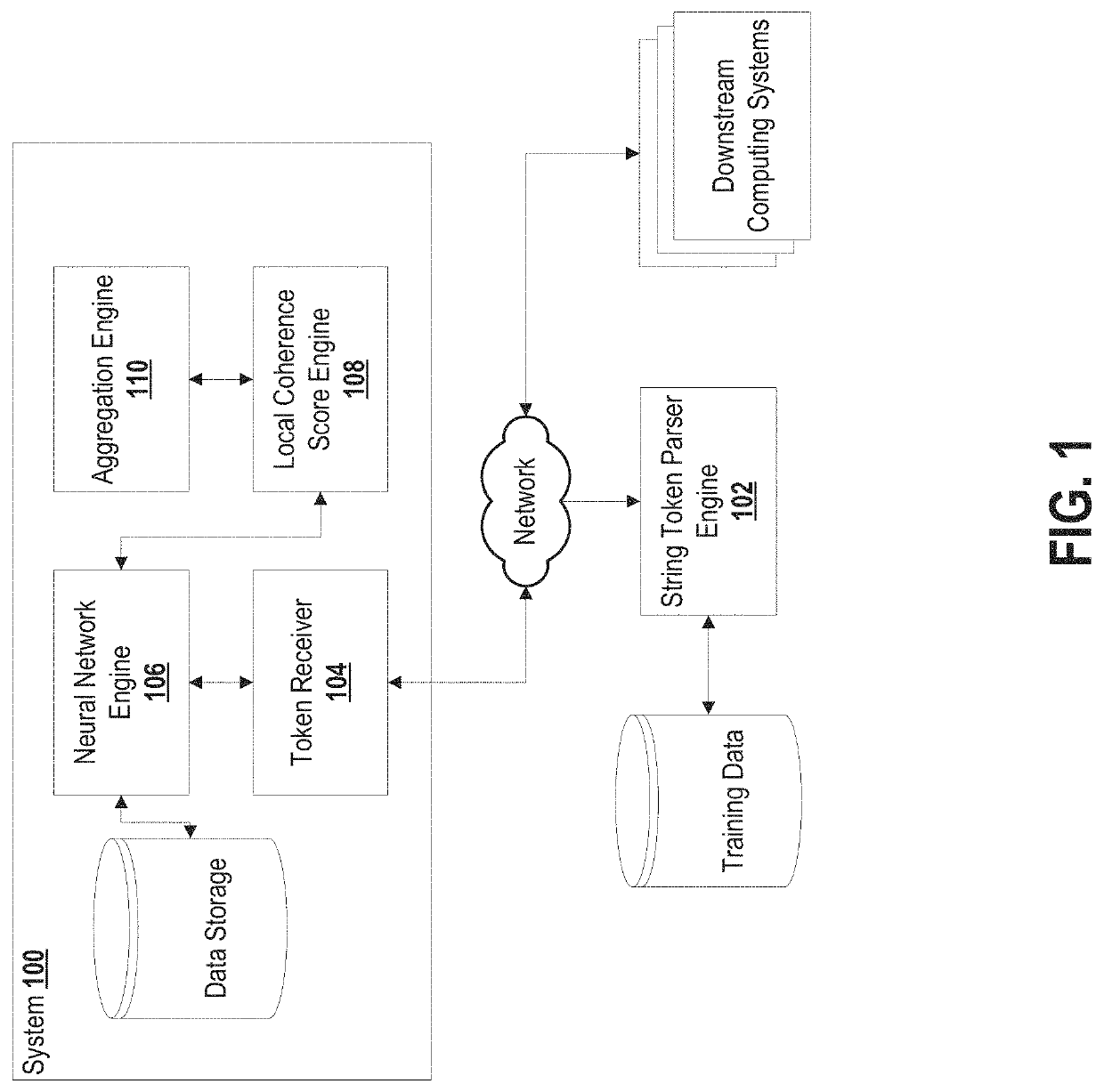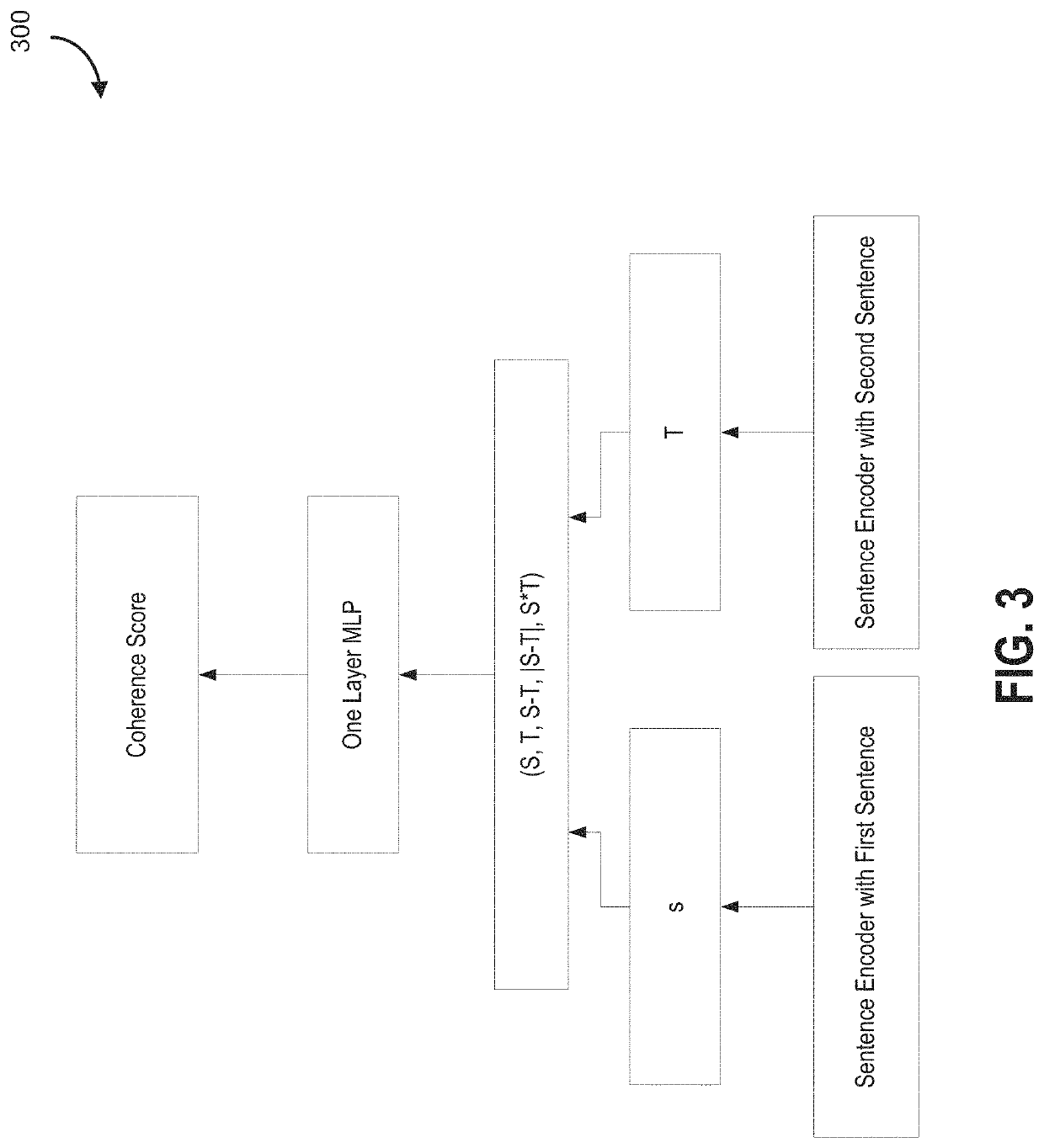System and method for cross-domain transferable neural coherence model
a coherence model and cross-domain technology, applied in the field of machine learning, can solve the problems of difficult prediction, different technical strengths and limitations, and the inability to train practically on all, and achieve the effect of good training coverag
- Summary
- Abstract
- Description
- Claims
- Application Information
AI Technical Summary
Benefits of technology
Problems solved by technology
Method used
Image
Examples
Embodiment Construction
[0044]As described in various embodiments, an improved approach for automatically estimating coherence of a target text object is described. While there are various different approaches attempting to estimate coherence, the embodiments described herein provide technical improvements in relation to transferability and ease of computation that is not exhibited in other approaches.
[0045]In this description, “passage” and “document” are used interchangeably since all the models under consideration work in the same way for a full document or a passage in document.
[0046]A deficiency of some other approaches (e.g., approaches that attempt to establish a global coherence level) includes a difficulty level of computation that scales non-linearly as the length of the passage of text grows, or becoming overfit to a particular topic or feature of the training set. Accordingly, these approaches have limitations on their practical use.
[0047]The described approach includes an unconventional approa...
PUM
 Login to View More
Login to View More Abstract
Description
Claims
Application Information
 Login to View More
Login to View More - R&D
- Intellectual Property
- Life Sciences
- Materials
- Tech Scout
- Unparalleled Data Quality
- Higher Quality Content
- 60% Fewer Hallucinations
Browse by: Latest US Patents, China's latest patents, Technical Efficacy Thesaurus, Application Domain, Technology Topic, Popular Technical Reports.
© 2025 PatSnap. All rights reserved.Legal|Privacy policy|Modern Slavery Act Transparency Statement|Sitemap|About US| Contact US: help@patsnap.com



